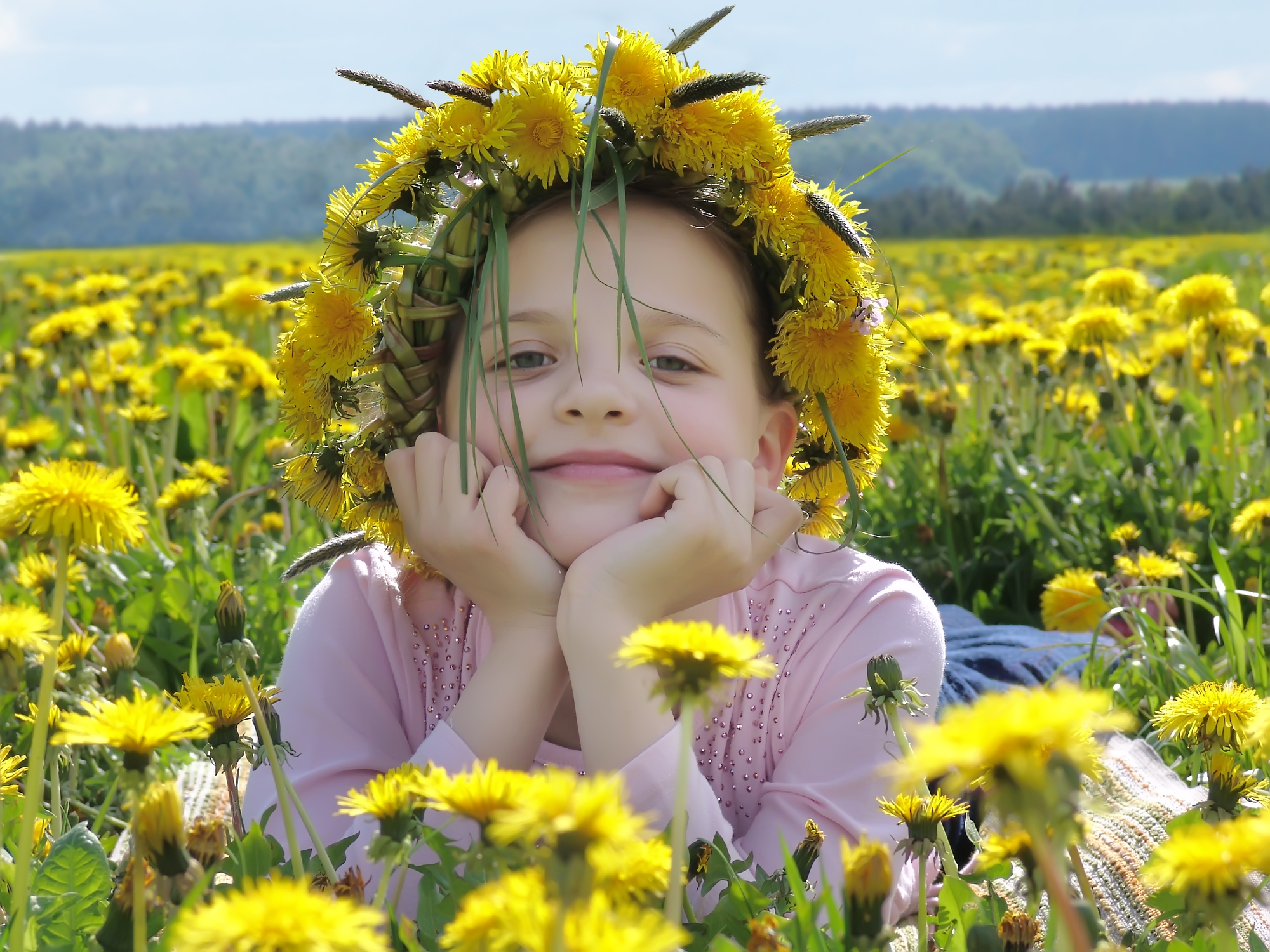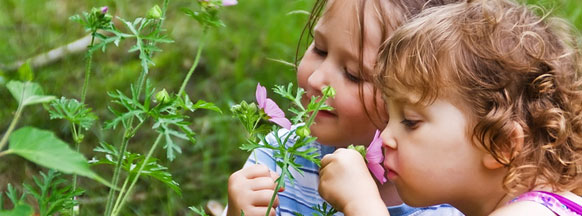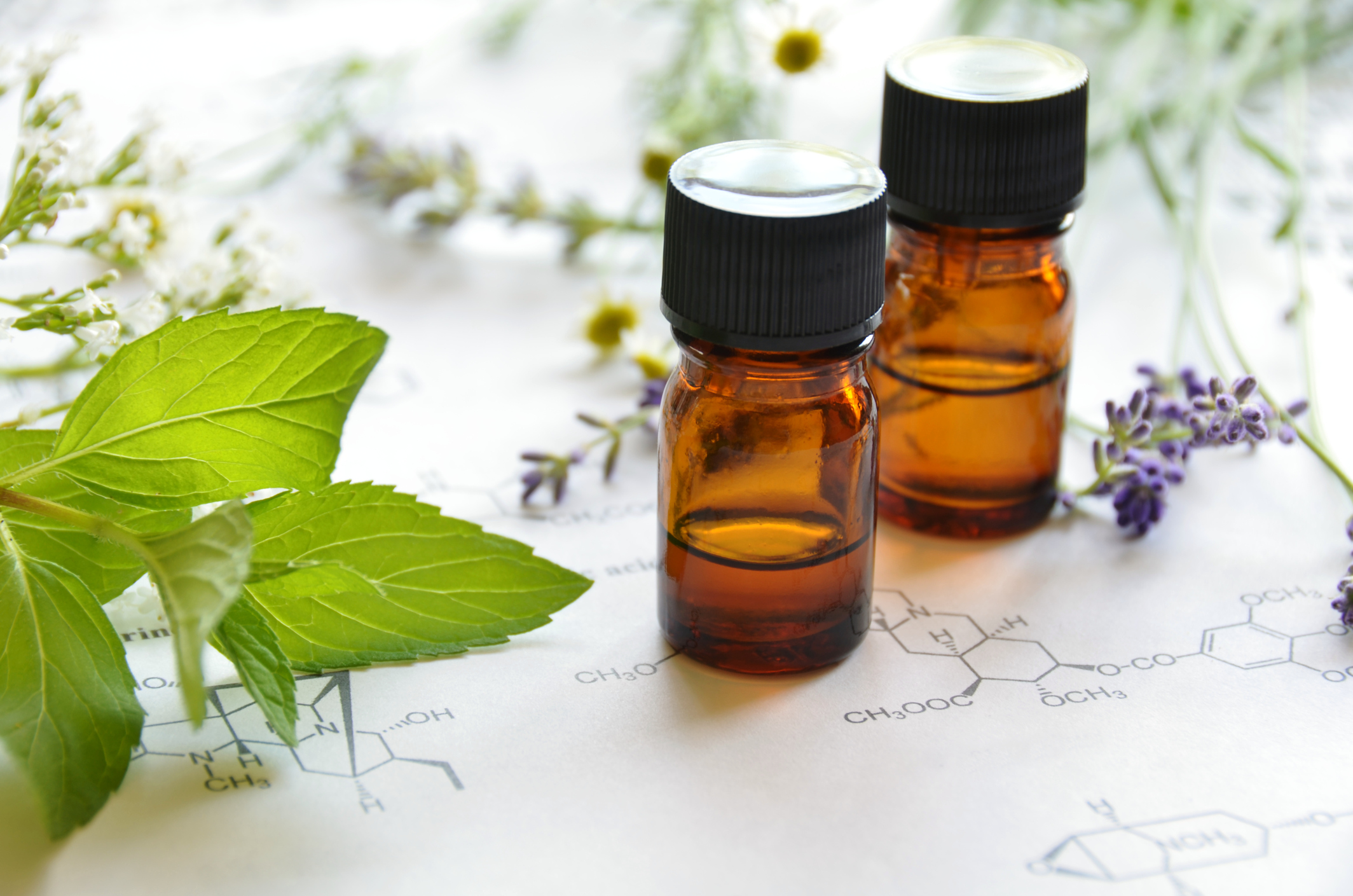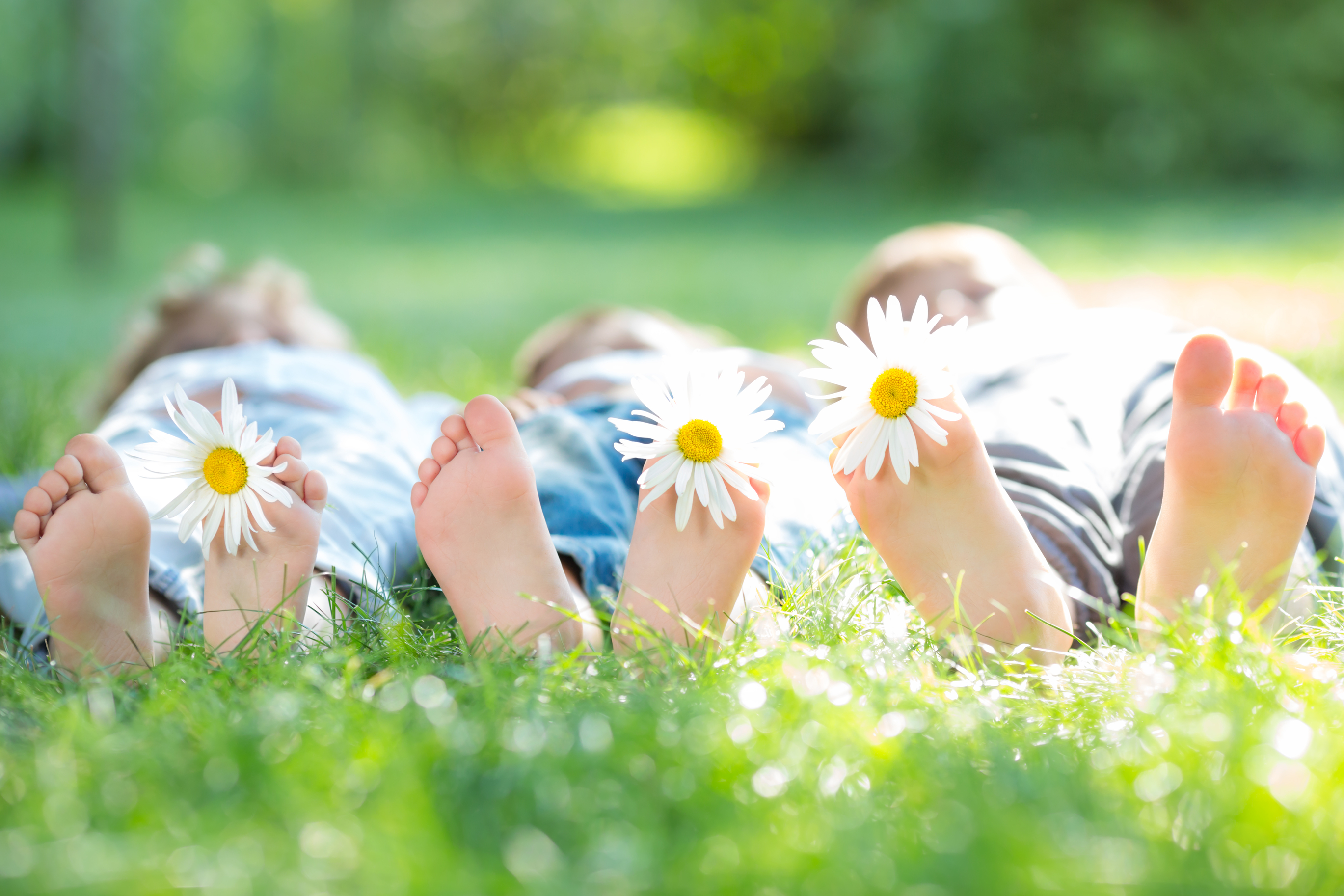Aromatherapy for Seasonal Allergies in Children
Posted on November 07, 2017 0
Aromatherapy for Seasonal Allergies in Children
By
Amy Emnett
Springtime is a time of renewed warmth and beauty. While the winter sniffles have hopefully come and gone, there is a new respiratory issue on the horizon: Seasonal allergies. With blooming flowers comes a boom in stuffy heads and itchy eyes. For children, these symptoms can keep them indoors when all they want to do is go outside, soak in the sun, and play in the warmer weather. More parents are looking for natural options to help to ease the symptoms of allergies. Let’s explore what we can do to help get these children playing back in nature where they belong!
 Causes of Seasonal Allergies
Causes of Seasonal Allergies
What is the cause of seasonal allergies? The biggest contributor to seasonal allergies is pollen. When this allergen enters the body, the immune system thinks it’s an invader and attacks it by releasing histamines into the blood. This causes the symptoms often associated with seasonal allergies.
The symptoms of seasonal allergies can include:
• Sneezing
• Itchy eyes, nose, or throat
• Nasal congestion/stuffy head
• Coughing
• Clear, runny nose.
These symptoms can come on suddenly and last until the allergens are gone. They can start at a young age and disappear, only to reappear in your twenties. Sometimes allergies can induce asthma. If your child is taking any medications for allergies or another ailment, please consult with a qualified aromatherapist to check for contraindications. It is also advisable to tell your pediatrician that you use essential oils.
Safety of Essential Oils with Children for Allergies
Essential oils are powerful and they have special precautions when you're using them with children. They are not to be feared, but to be treated with the utmost respect. I have created a chart on how to use aromatherapy safely with children. I have broken it down into age groups for easy reference. The general rule of thumb is: The younger the child, the greater the risk factor.
Age of Child How to Use: Inhalation How to Use: Topical Use 0-6 months Spritz of hydrosol in the air. Spritz of hydrosol on caregiver that the baby can smell. -Diluted*hydrosols of lavender (Lavandula angustifolia) or one of the chamomiles: Roman chamomile (Chamaemelum nobile) or German chamomile (Matricaria recutica) can be used for skin issues.
-Organic, unrefined carrier oils/butters such as virgin coconut oil or shea butter. 6 months-2 years Use a couple drops of child-friendly essentialoils* in a diffuser for 15 minutes then turn off. Diffuse 2-3 times a day as needed. -Diluted* hydrosols of lavender (Lavandula angustifolia) or one of the chamomiles: Roman chamomile (Chamaemelum nobile) or German chamomile (Matricaria recutica) can be used for skin issues.
-Organic unrefined carrier oils/butters such as tamanu (Calophyllum inophyllum) oil or trauma oil.
2 years-5 years Only a few drops of child-friendly essential oils** in a diffuser for 15 minutes then turn off. Diffuse 2-3 times a day as needed. Dilution of essential oils at 0.5%-1%
5 years + Intermittent diffusion for 15-30 minutes on, and at least 60 minutes off. Diffuse 2-3 times a day as needed.
More direct inhalation methods can be utilized, such as aromasticks. Dilution of essential oils at 1%
*Hydrosol dilution is one drop per ounce of distilled water
**See below for examples
Just like the usage guidelines are different for children, there is also a separate list of child appropriate essential oils. While some of the essential oils traditionally used for respiratory issues might be your first instinctive thought, several of these essential oils have special precautions or contraindications for children. These essential oils include:
● Peppermint (Mentha x piperita) is a BIG no-no for children under three years. Peppermint essential oil contains a large amount of menthol. Menthol stimulates cold receptors in the lungs. This triggers a reflex in young children, which slows breathing significantly, sometimes dangerously.1
● Essential oils high in 1,8 cineole, such as eucalyptus (Eucalyptus globulus, E.radiata), rosemary (Rosmarinus officinalis ct. cineole), and ravintsara (Cinnamomum camphora). While these essential oils can be very helpful in supporting the respiratory system in adults, they can cause central nervous system and breathing problems in small children when overused. They should not be applied on, or close to, the faces of children under 10 years of age.1
● Essential oils high in camphor, such as spike lavender (Lavandula latifolia), should be avoided with children under the age of 6. “ It is concluded that small doses are dangerous.”
● Any type of immune blend which includes cinnamon bark (Cinnamomum zeylanicum), clove(Eugenia caryophyllata, eucalyptus (Eucalyptus globulus, E. radiata), rosemary (Rosmarinus officinalis ct. cineole). There are several contraindications with the essential oils in these types of blends for children. I talked about eucalyptus (Eucalyptus globulus, E.radiata) and rosemary (Rosmarinus officinalis ct. cineole) essential oils above. Clove (Eugenia caryophyllata) essential oil is contraindicated in children under two years of age and cinnamon bark (Cinnamomum zeylanicum) essential oil is a dermal sensitizer.1
 Suggested Essential Oils for Children with Allergies
Suggested Essential Oils for Children with Allergies
● Cedarwood (Cedrus atlantica):This is my go-to essential oil and favorite base note for respiratory support in children. Its decongestant activity combined with its expectorant abilities make it a superior choice. It seems to really pack a punch by stimulating the respiratory system. It has a soothing energy to it, reminiscent of a warm hug. It blends beautifully with sweet orange (Citrus sinensis) essential oil and lavender (Lavandula angustifolia) essential oil.
● Lavender (Lavandula angustifolia): True lavender essential oil contains linalool, which can have anti-inflammatory actions that may help relieve tissue congestion.3 It also has anti-allergic activity.4 Lavender essential oil is a gentle choice with an aroma that many children find pleasing on its own. It can help bring balance to the body. Using lavender essential oil in your blend can also enhance immune function.
● Frankincense (Boswellia sacra): Frankincense essential oil can help to open up breathing airways and help with the spastic cough that can creep up during allergy season. The presence of d-limonene can give it an anti-inflammatory effect5 while offering immune support.6. It is not exactly a child’s favorite aroma but pair it with a citrus essential oil and it will create an aromatically pleasing synergy.
● German chamomile (Matricaria recutita): German chamomile essential oil's chamazulene content is responsible for its anti-histaminic action. It also has anti-inflammatory properties that can help with an irritated respiratory tract.
● The conifer essential oils: Particularly siberian fir (Abies sibirica) and pinon pine (Pinus edulis) essential oils seem to be favored by children. These essential oils are also rich in alpha-pinene and really allow you to breathe easier. Black spruce (Picea mariana) essential oil is good too but I’ve had kids tell me that it smells like Home Depot! As with any essential oil, make sure that the child smells it first. If they don’t like it, they won’t use it! All essential oils high in alpha-pinene should be given a cap test prior to using with asthmatics, due to the risk of inducing an attack.
● While tea tree (Melaleuca alternifolia) essential oil is an oil that I think of right away to help allergies in adults, I have found that children are not so keen on the aroma. So I like to use Fragonia™ (Agonis fragrans) essential oil and rosalina (Melaleuca ericifolia) essential oil instead of tea tree essential oil. Fragonia ™ essential oil is a very balanced oil with a sweet, fresh aroma. It has almost a perfect balance of oxides (it has a moderate 1,8 cineole content), monoterpenes (alpha-pinene, as seen in frankincense and siberian fir essential oils) and monoterpenols (linalool and terpinene-4-ol as found in tea tree essential oil). Rosalina, also known as lavender tea tree, is a gentle, yet effective, essential oil. Its chemical composition of linalool andalpha-pinene with a touch of 1,8 cineole make it an obvious choice for congestion.
● Sweet orange (Citrus sinesis): I have yet to meet a kid who doesn’t enjoy sweet orange essential oil. It brings an element of familiarity and comfort. It has a high percentage of d-limonene content and it can help to support the immune system. Combine it with Fragonia ™ essential oil for a delightful aroma.
 Blending Suggestions for Children with Allergies
Blending Suggestions for Children with Allergies
Diffuser Blend
Essential Oils:
• 1 drop German chamomile (Matricaria recutita)
• 2 drops Siberian fir (Abies sibirica)
• 3 drops lemon (Citrus x limon)
Instructions for Use: Check the chart in this article for diffusing guidelines.
Aromastick
For children five years and older.
Essential Oils:
• 3 drops cedarwood (Cedrus atlantica)
• 3 drops rosalina (Melaleuca ericifolia)
• 4 drops lavender (Lavandula angustifolia)
Instructions for Use: Place the required number of drops of each essential oil onto the organic cotton wick of aromastick. To use, twist off the lid and have the child take a deep inhale. Put the cap back on. Use when needed.
Cautions: If headache or nausea occurs, lessen or discontinue use.
Simple Nighttime Chest Salve
Ingredients:
• ¼ oz. beeswax (Apis mellifera)
• ¾ oz. jojoba (Simmondsia chinensis)
Essential Oils:
• 3 drops lavender (Lavandula angustifolia)
• 1 drop frankincense (Boswellia sacra)
• 1 drop cedarwood (Cedrus atlantica)
• 1 drop sweet orange (Citrus sinesis)
Instructions for Use:
• Using a double boiler method, melt the beeswax and jojoba.
• Once melted, remove from heat.
• Add essential oils. Stir.
• Pour into a metal container and allow to cool.
• Rub a small amount of salve onto the chest of children two years and older.
Cautions: If irritation occurs, discontinue use.
Inhalation Methods of Aromatherapy for Allergies
In respiratory issues, I recommend using the inhalation method before topical use. Inhalation is the fastest, most effective, and safest way to use aromatherapy for children. An ultrasonic diffuser is a great tool to have in your tool box when dealing with respiratory issues. But unfortunately, you can’t take a diffuser with you everywhere that you go. This is where aromasticks (also known as personal inhalers) come into play. For children five years and older, add ten drops or less of your blend onto the organic cotton wick of the aromastick. Tada! Your child now has his/her own portable “diffuser.” Make it fun by having the kids decorate it with washi tape but make sure to supervise them while doing so.
Steam inhalation is an effective way to break up congestion, allowing the child to breathe easier. This could be addinga drop of essentialoil onto the shower floor and running hot water while you sit in the bathroom. Or you can make it fun by creating a shower steamer. Shower steamers are made of natural ingredients, usually baking soda and citric acid, which can be molded into fun shapes. You can then drop the essential oil blend right onto the steamer. Kids love to watch it fizz and dissolve in the shower!
Additional Support for Allergies in Children 
Probiotics are another way to support overall health to fight allergies. Probiotics that are found in food-based sources or through supplementation, can help to improve your gut flora. Look for fermented foods, yogurt, and drinks like kefir and kombucha. My kids especially enjoy kefir smoothies and they think that it’s a delicious treat!
Another way to protect your child’s terrain is by eliminating harsh synthetic chemicals from your home. Try cleaning around the house with hydrogen peroxide, baking soda, vinegar, etc. instead of commercial cleaners. Remove synthetic fragrance-laden items such as plug-ins and sprays. Look at your laundry detergent and try to choose fragrance-free or one with naturally derived ingredients.
Support your child’s immune system with a diet full of nutrient dense foods and fewer refined carbohydrates. We are what we eat! A weakened immune system can aggravate allergy symptoms. Implementing simple changes by focusing on nutrition, exercise, hydration, and sleep can help to maximize health benefits. By incorporating a balanced approach with aromatherapy and healthy lifestyle choices, your child has a fighting chance against seasonal allergies.
References:
1. Tisserand, Robert and Young, Rodney (2014), Essential Oil Safety. London: Churchill Livingstone.
2. Love, JN. Sammon, M., Smereck, J. (2004)Are one or two dangerous? Camphor exposure in toddlers. J. Emerg. Med. 27, 49-54
3. Rivot, J. P., Montagne-Clavel, J. and Besson, J. M. (2002) Subcutaneous formalin and carrageenan increase nitric acid release as measured by in vivo voltammetry in the spinal cord. European Journal of Pain 6, 25-34.
4. Kim, H.M. and Cho, S.H. (1999) Lavender oil inhibits immediate-type allergic reaction in mice and rats. Journal of Pharmacy and Pharmacology 51, 221-226.
5. Hirota, R., Roger, N.N., Nakamura, H., Song, H.-S., Sawamura, M., and Suganuma, N. (2010) Anti-inflammatory effects of limonene from yuzu (Citrus junos Tanaka) essential oil on eosinophils. Journal of Food Science 75, 87-92
6. Del Toro-Arreola S, Flores-Torales E, Torres-Lozano (2005) Effect of d-limonene on immune response in BALB/c mice with lymphoma. International Immunopharmacology 5:829-838
About Amy Emnett:
 Amy Emnett is a clinical aromatherapist and certified natural health professional. She is the owner of Blossoms+Blends Aromatherapy, located in St. Louis, Missouri, where she resides with her husband and three small children. She brings together her knowledge of aromatherapy, nutrition, herbs, and flower essences to create a holistic picture for her clients. She is a passionate educator who empowers others through engaging classes and workshops.
Amy Emnett is a clinical aromatherapist and certified natural health professional. She is the owner of Blossoms+Blends Aromatherapy, located in St. Louis, Missouri, where she resides with her husband and three small children. She brings together her knowledge of aromatherapy, nutrition, herbs, and flower essences to create a holistic picture for her clients. She is a passionate educator who empowers others through engaging classes and workshops.
Amy is a professional member of both NAHA and AIA, and she is the NAHA Missouri Director. She is an avid learner who enjoys sharing the beauty of aromatherapy with others to help them achieve their wellness goals. Contact Amy for information at her website: www.blossomsandblends.com
Comments
No comments yet for this entry.
Please Log In to post comments